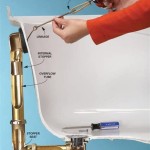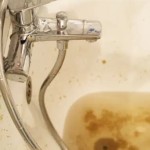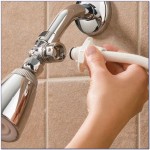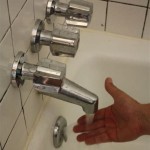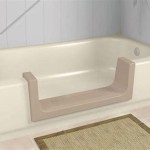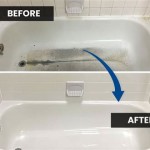Sealant for Bathtub Spout Diverter Valve: A Comprehensive Guide
Bathtub spout diverter valves are commonplace in residential plumbing systems, providing users with the ability to switch the flow of water between the bathtub spout and the showerhead. These valves, typically located within the spout itself, are subject to constant exposure to water, temperature fluctuations, and mechanical stress. Over time, these factors can contribute to leaks around the diverter valve components. Addressing these leaks requires a careful approach, often involving the application of a suitable sealant to create a watertight barrier.
The purpose of this article is to provide a detailed overview of the sealants used for bathtub spout diverter valves, focusing on the types available, their application, factors influencing sealant selection, and common issues encountered during the sealing process. Understanding these aspects is crucial for ensuring a successful and long-lasting repair.
Understanding Bathtub Spout Diverter Valves
A bathtub spout diverter valve is a mechanism designed to redirect water flow. When the diverter is in its default position, water flows freely from the bathtub spout. When the diverter is activated, typically by pulling up a lever or knob on the spout, the valve redirects the water flow to the showerhead. This allows the user to switch between taking a bath and taking a shower using the same plumbing fixture.
These valves come in various designs, but most operate on a similar principle. A sliding or pivoting component within the spout obstructs the flow to the spout outlet when activated, simultaneously opening a pathway to the showerhead connection. The complexity of the valve design, the materials used in its construction (often brass or plastic), and the quality of the internal seals all play a role in its longevity and susceptibility to leaks.
Leaks around the diverter valve can manifest in several ways. Water might drip from the spout even when the shower is in use, or water pressure to the showerhead may be diminished due to water escaping through a leak around the valve. Identifying the source of the leak is the first step in determining the appropriate course of action. In some cases, the entire spout may need to be replaced, while in others, applying a sealant to specific areas can effectively resolve the problem.
Types of Sealants Suitable for Diverter Valves
Selecting the appropriate sealant is paramount to achieving a durable and watertight repair. Several types of sealants are commonly used in plumbing applications, each with its own characteristics, advantages, and disadvantages. For bathtub spout diverter valves, the following types are frequently considered:
Plumber's Putty: Plumber's putty is a pliable, clay-like substance that is primarily used to create a watertight seal between stationary plumbing fixtures and surfaces, such as between the flange of a drain and the sink or tub. It is not an adhesive and does not harden; instead, it relies on compression to maintain its seal. While it can be used for some parts that connect to the spout, it’s generally not suited for areas directly within the diverter valve mechanism itself due to its consistency and limited ability to withstand pressure.
Silicone Sealant: Silicone sealant is a versatile and widely used option for plumbing applications. It is known for its excellent water resistance, flexibility, and adhesion to a variety of materials, including metal, plastic, and ceramic. Silicone sealants are available in various formulations, some of which are specifically designed for plumbing use and are labeled as "plumbing silicone." These formulations often contain additives that inhibit mold and mildew growth, which is particularly important in a bathroom environment. Silicone sealants typically cure to a rubbery consistency, providing a flexible and durable seal that can withstand temperature fluctuations and vibrations.
Thread Sealant (Pipe Dope): Thread sealant, also known as pipe dope or Teflon paste, is specifically designed for sealing threaded connections in plumbing systems. It provides lubrication during assembly, allowing for tighter and more secure connections, and it fills any microscopic gaps between the threads to prevent leaks. While thread sealant is essential for threaded connections related to the spout (e.g., where it connects to the pipe coming from the wall), it is not typically used within the diverter valve mechanism itself, unless that mechanism involves threaded components.
Teflon Tape (PTFE Tape): Teflon tape, also known as PTFE (polytetrafluoroethylene) tape or plumber's tape, is a thin, white tape used to create a watertight seal on threaded pipe connections. Similar to thread sealant, it acts as a lubricant during assembly and fills gaps between the threads. It is wrapped around the threads of a male pipe fitting before it is screwed into a female fitting. Teflon tape is primarily used on threaded connections and is not suitable for sealing flat surfaces or gaps within the diverter valve mechanism.
Epoxy Sealants: Epoxy sealants are two-part systems that, when mixed, create a very strong and durable bond. They are highly resistant to water and chemicals and can withstand high temperatures. While epoxy sealants offer excellent strength and durability, they are less flexible than silicone sealants and may not be suitable for applications where movement or vibration is expected. Furthermore, epoxy can be difficult to remove if future repairs are needed.
The most appropriate sealant for a bathtub spout diverter valve depends on the specific location and nature of the leak. For general sealing around the valve components, plumbing-grade silicone sealant is often the preferred choice due to its balance of flexibility, water resistance, and adhesion. For threaded connections associated with the spout, thread sealant or Teflon tape is essential.
Factors Influencing Sealant Selection
Several factors should be considered when selecting a sealant for a bathtub spout diverter valve:
Material Compatibility: The sealant must be compatible with the materials of the spout and diverter valve components. Some sealants may react negatively with certain plastics or metals, leading to degradation or corrosion. For instance, some acidic silicone sealants can corrode brass over time. Always consult the sealant manufacturer's specifications to ensure compatibility.
Water Resistance: The sealant must be highly resistant to water, as it will be constantly exposed to moisture. Plumbing-grade silicone sealants are specifically formulated for this purpose and typically offer excellent water resistance.
Temperature Resistance: The sealant should be able to withstand the temperature fluctuations that occur during showers and baths. Extreme temperature changes can cause some sealants to expand and contract, potentially leading to cracks or leaks.
Flexibility: The sealant should be flexible enough to accommodate slight movements and vibrations that may occur in the plumbing system. Rigid sealants can crack or break under stress, compromising the seal.
Adhesion: The sealant must have good adhesion to the surfaces being sealed. Proper surface preparation, including cleaning and drying, is crucial for ensuring adequate adhesion. Some sealants require the use of a primer to enhance adhesion, particularly on non-porous surfaces.
Ease of Application: The sealant should be easy to apply and work with. Silicone sealants are typically applied using a caulking gun, allowing for precise and controlled application. Thread sealants and Teflon tape are applied directly to the threads of pipe fittings.
Durability: The sealant should be durable and long-lasting, providing a reliable seal for an extended period. The lifespan of a sealant can vary depending on the type of sealant, the application conditions, and the quality of the installation.
Common Issues and Troubleshooting
Even with careful sealant selection and application, several issues can arise during the sealing process:
Poor Adhesion: Poor adhesion is a common problem that can lead to leaks. This is often caused by inadequate surface preparation, such as failure to remove dirt, grease, or old sealant. Before applying a sealant, thoroughly clean and dry the surfaces to be sealed. Use a solvent such as isopropyl alcohol to remove any remaining residue. In some cases, a primer may be necessary to improve adhesion.
Incomplete Seal: An incomplete seal can occur if the sealant is not applied evenly or if there are gaps or voids in the sealant bead. When applying silicone sealant, use a smooth, continuous bead and ensure that it completely fills the gap between the surfaces being sealed. Use a wet finger or a sealant smoothing tool to create a smooth and professional finish. If you notice any gaps or voids, apply additional sealant to fill them.
Premature Curing: Some sealants can cure too quickly, making it difficult to work with them and achieve a proper seal. This is more likely to occur in hot or humid environments. To prevent premature curing, work in a well-ventilated area and avoid exposing the sealant to direct sunlight or heat. Only apply the sealant to small areas at a time, and smooth it out immediately after application.
Sealant Cracking: Sealant cracking can occur over time due to temperature fluctuations, movement, or exposure to harsh chemicals. To prevent cracking, choose a sealant that is designed for use in plumbing applications and that is known for its flexibility and durability. Avoid using harsh chemicals or abrasive cleaners on the sealant, as these can damage it and cause it to crack.
Leaks After Sealing: If leaks persist after applying sealant, it indicates that the original sealing attempt was unsuccessful. This may be due to improper application, inadequate surface preparation, or the use of an inappropriate sealant. Carefully inspect the sealed area to identify the source of the leak. Remove the old sealant and reapply a fresh bead of sealant, ensuring that the surfaces are clean and dry and that the sealant is applied evenly.
Difficulty Removing Old Sealant: Removing old sealant can be a challenging task, especially if it has hardened or bonded strongly to the surfaces. Use a sealant remover or a putty knife to carefully scrape away the old sealant. Be careful not to damage the underlying surfaces. In some cases, heat can be used to soften the sealant and make it easier to remove. A heat gun or hair dryer can be used to gently warm the sealant before scraping it away.
When troubleshooting sealant issues, it is important to carefully assess the situation, identify the root cause of the problem, and take appropriate corrective action. With proper preparation, sealant selection, and application techniques, it is possible to achieve a durable and watertight seal for a bathtub spout diverter valve.

How To Install Red Disc Seal Protect Your Bathtub Wall Prevent Drywall Damage Www Reddiscseal Com

Danco Tub Spout Diverter Repair Kit 89205 The Home Depot

How To Seal Tub Spout And Valve Trim With Silicone Caulking The Fixer Clips

How To Fix A Shower Diverter Repair Or Replace

How To Install A Tub Spout The Home Depot

Bathtub Spout With Diverter Replacement Fix Leaking Tub Jonny Diy
Danco Tub Spout Diverter Repair Kit Metal Plastic Mfr 9d00089205 Ace Hardware

Lift Gate And Diverter Tub Spout Kit

Moen Diverter Tub Spout Repair Kit

1 2 Bathtub Spout Back Sealing Bathroom Finished Wall Protection From Water Leakage Bath Leaking Prevention Disc Seal Block For Shower
Related Posts

